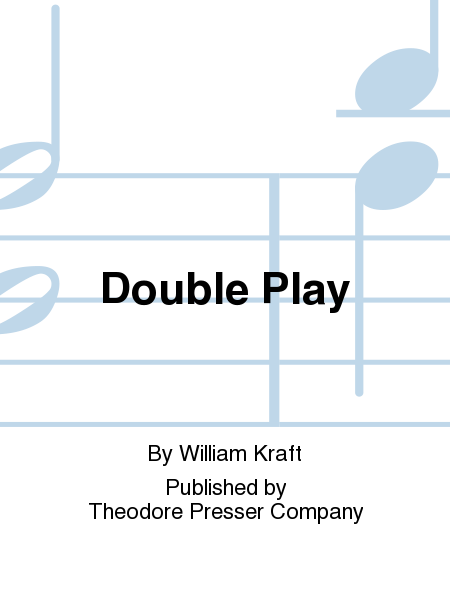Double Play
for Violin, Piano, and Chamber Orchestra
-
Ships in 2 to 3 weeks
Details
Description
SKU: PR.416411770
For Violin, Piano, and Chamber Orchestra. Composed by William Kraft. Full score. With Standard notation. Duration 17 minutes. Theodore Presser Company #416-41177. Published by Theodore Presser Company (PR.416411770).UPC: 680160091508.
I was tempted to call the piece Throw Back because it consciously employs rhythmic and harmonic approaches characteristic of the earlier part of the twentieth century, much of which plays a part in forging my musical personality. Going along with the impetus, I have paid homage by subtly interpolating stylistic or actual references to such unexpected bedfellows as Scriabin, Ravel, Debussy, Piston, Roussel, and Ysaye. I hope I will be musically forgiven. In one continuous movement, there are three definite internal sections: Presto-Largo-Allegro. The first section opens with a very soft percussion cadenza. If the acoustics allow it, the player will use sponge pottery mallets (sponge-headed mallets employed to smooth the interior of a pot as it is being spin-dried). No matter how hard the percussionist strikes the drums, the dynamic cannot go above pp (pianissimo). This cadenza serves as a basis for the first movement. The elements of the cadenza are taken by the orchestra to make the first major statement, similar to the classical concerto; but rather than making a restatement, the soloists, when they come in, begin with variational ideas. The second section is given over to the soloists, and is lyrical. The third section begins with an alternation between strict rhythmic pulsation and free-sounding timbres, as if reluctant to leave the second section behind. The rhythmic aspect takes over more and more as the piece progresses toward its conclusion. Double Play was commissioned by the Saint Paul Chamber Orchestra with financial assistance from the Northwest Area Foundation. It received its premiere on January 7, 1983, in St. Paul, with the St. Paul Chamber Orchestra; Pinchas Zukerman, violinist; Marc Neikrug, piano; and the composer conducting.

 Share
Share